Phishing is one of the most common and effective cybersecurity attack vectors, accounting for roughly a quarter of all ransomware attacks between 2019 and 2021, according to research from Cloudian. As businesses settle into permanent hybrid and virtual work environments in the wake of the COVID-19 pandemic, protecting sensitive data from phishing attacks is top of the agenda for many executives.
What is phishing and how can it impact your organization?
Phishing is a type of cybersecurity attack that usually involves malicious actors sending fraudulent emails disguised as sources familiar to the target in an effort to steal sensitive data, like account information, login credentials, personal details and more. Phishing emails typically contain malicious links, attachments or downloads, which serve as a vehicle to infect the host system with malware.
However, phishing can also be as simple as the attacker soliciting personal information directly from the recipient, making it seem as though the request is coming from a trustworthy source.
A single, successful phishing attack can have lasting consequences for an organization. These include:
-
- Financial loss.
- Operational disruption.
- Reputational damage.
- Loss of consumer trust.
All of the above effects are enough to severely impact an organization. However, combined with the costs of repairing customer relationships and recouping financial losses, it’s possible for businesses to shut down permanently after a successful phishing scam. IBM found that the average cost of a data breach in 2021 was $4.24 million, a 10% increase over the previous year. The same IBM research found that the average time to detection for a breach was 287 days, and that the country with the highest data breach cost was the United States with an average cost of $9.05 million.
The different types of phishing attacks
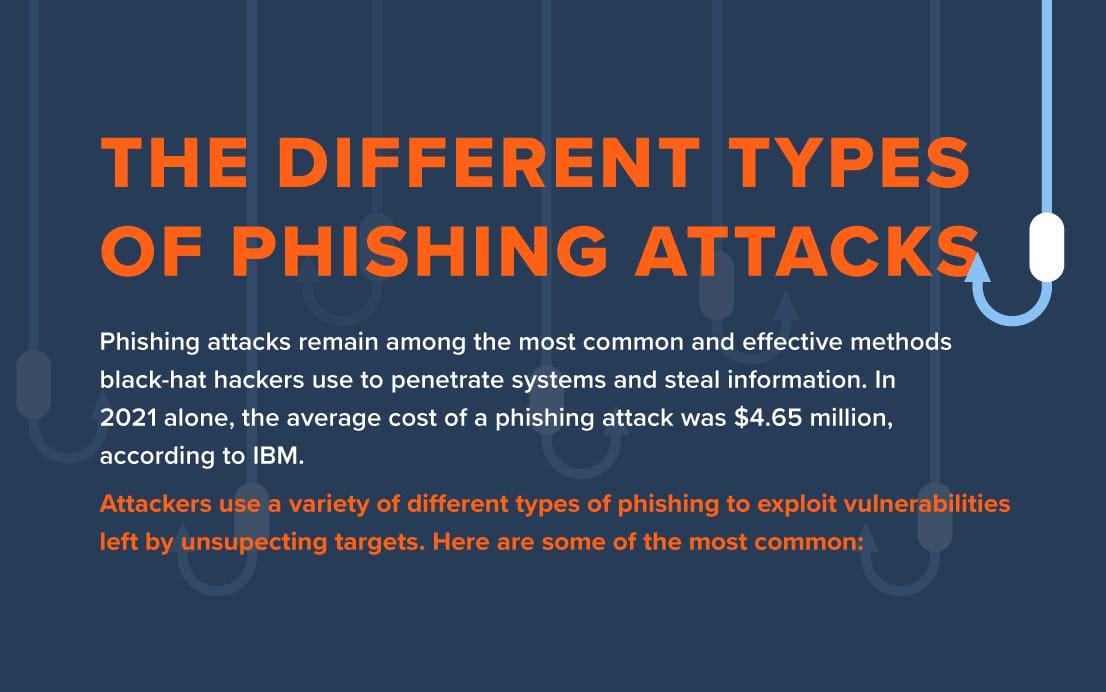
Hackers use different types of phishing depending on their intended target and the quality of data they hope to exfiltrate. The four major types of phishing attacks are:
-
- Deceptive phishing: Widely considered among the most common forms of phishing, deceptive phishing involves the hacker sending emails disguised as a legitimate company or organization in an effort to solicit a target’s sensitive personal information.
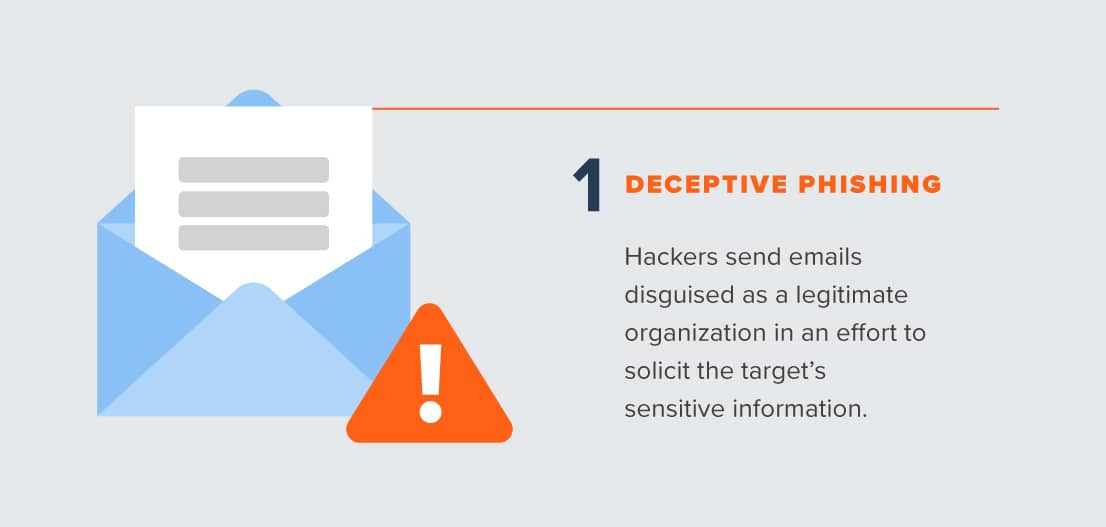
-
- Spear phishing: This is one of the more precise phishing types. Spear phishing incorporates the target’s specific personal information into fraudulent emails, including their name, organization, supervisor name and any other information that might suggest a legitimate connection with the sender.
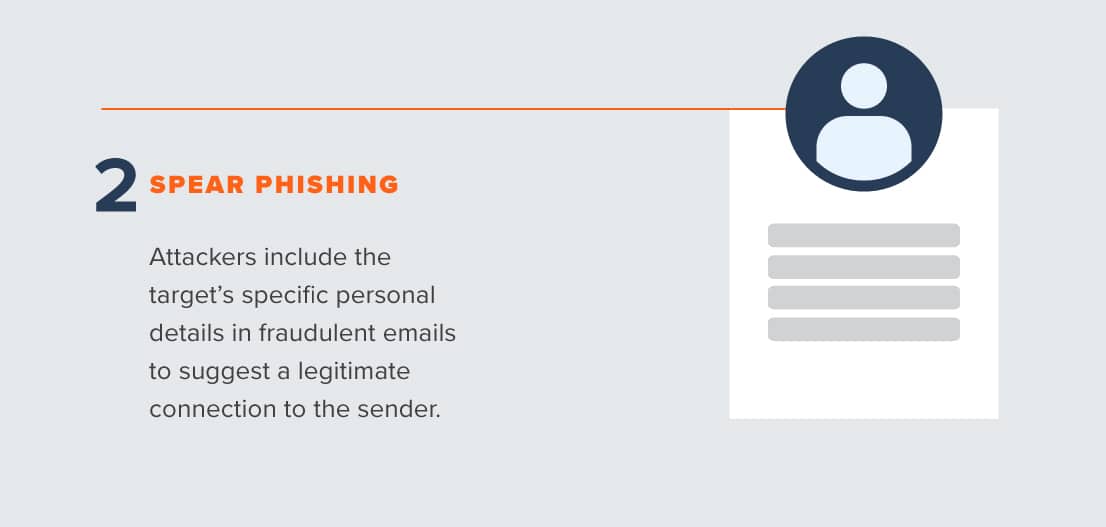
-
- Clone phishing: Among the more sophisticated types of phishing attacks, clone phishing involves attackers copying existing emails that their targets have already received and replacing legitimate links and downloads with malicious ones.
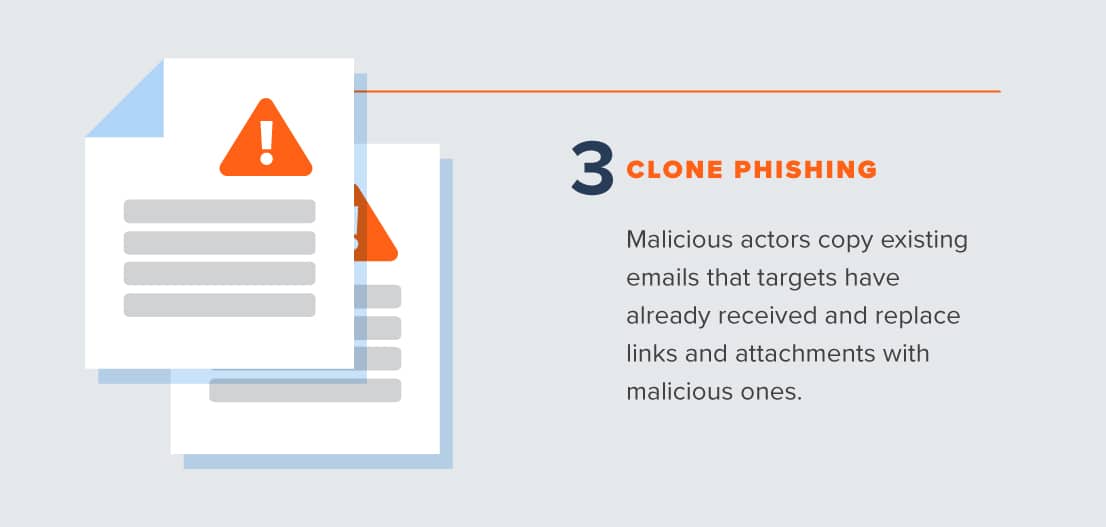
-
- Whaling attack: For many black-hat hackers, stealing data from senior executives is the gold standard in malicious cyber activity. Similar to deceptive phishing, whaling attacks specifically target C-level executives to steal higher quality data.
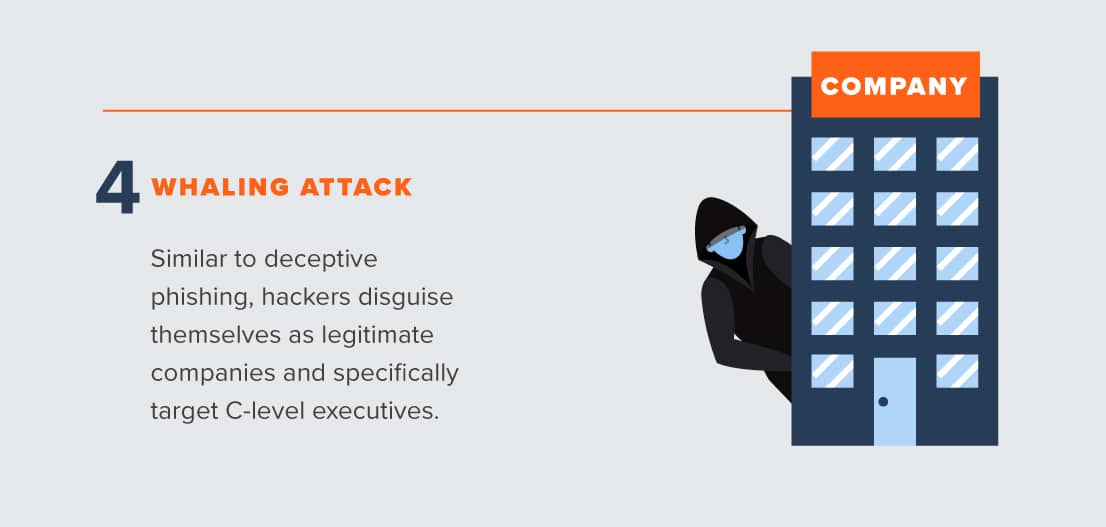
-
- Longlining: Longlining attacks are mass customized phishing messages that are typically engineered to look like they are only arriving in small quantities, mimicking targeted attacks. Attackers leverage approaches used by mass marketing campaigners to generate millions of dissimilar messages.
The 5 common indicators of a phishing attempt
Phishing emails are effective because they seem real and can be difficult to spot. However, there are a few common signs that users should know to detect fraudulent emails.
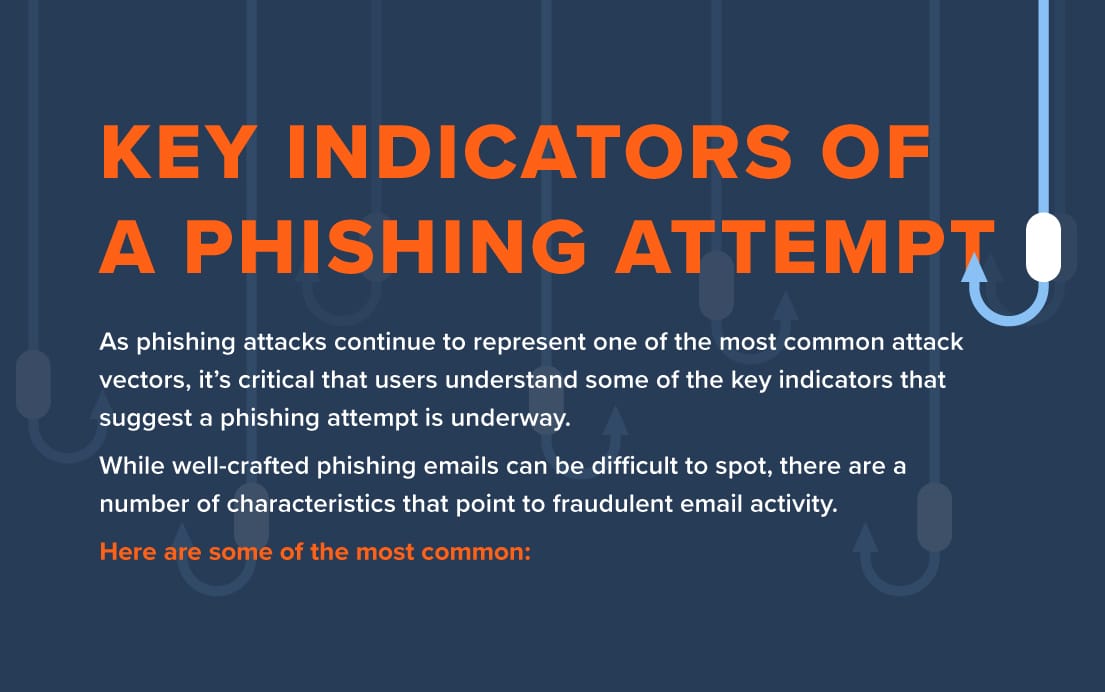
Here are the 5 common indicators of a phishing attempt:
1. Spelling errors: Of course, everyone makes a spelling or grammar mistake from time to time, but phishing attempts are often riddled with them. If an email in your inbox contains multiple indicators on this list and is also riddled with unusual spelling and grammatical errors, it’s probably a scam.
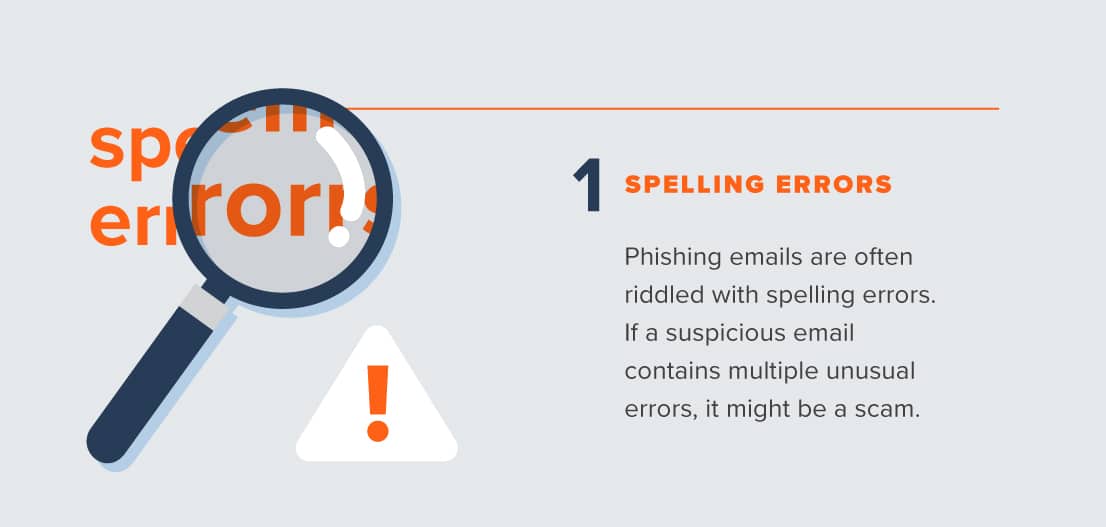
2. Unusual requests: If you don’t usually interact with your CEO on a regular basis and you suddenly receive an urgent email from them asking you to complete a seemingly mundane task (like sending them your phone number), that’s likely the sign of an illegitimate request from a malicious actor.
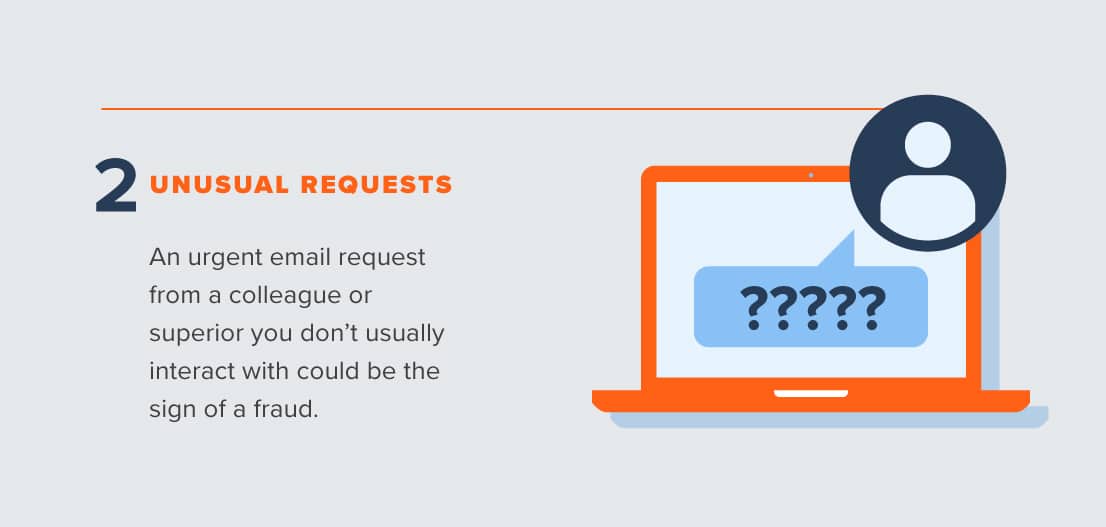
3. Strange email content: A phishing email might contain content that is inconsistent with your understanding of the relationship with the supposed sender. For example, your sender might introduce themselves in the email, despite claiming to be someone with whom you already have an established relationship.
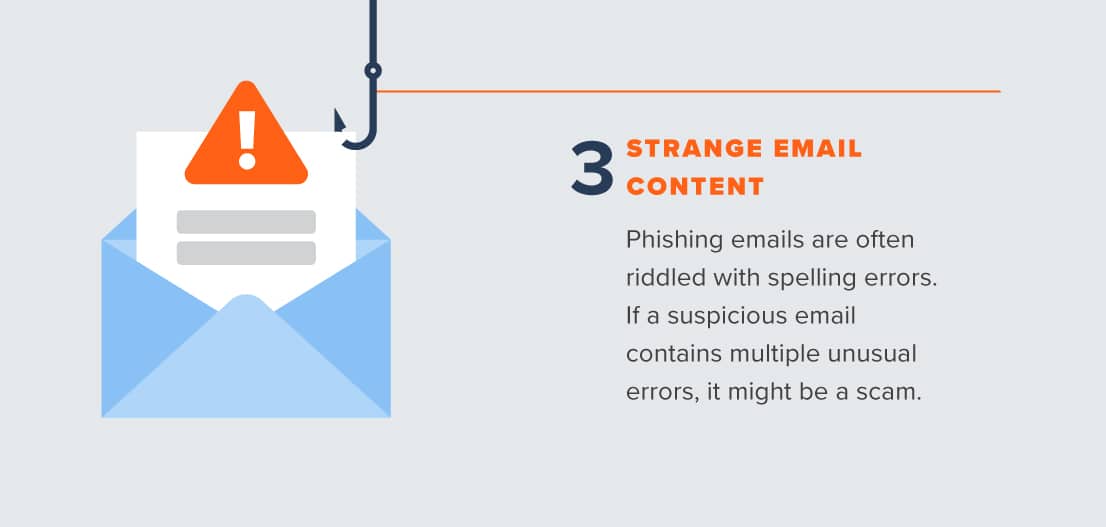
4. Personal information solicitation: Most companies (and supervisors and managers, for that matter), understand that email can be unsecure, so they almost never use it to ask for personal information. An email containing a request for sensitive information (i.e., date of birth, home address, phone number, etc.) is probably an attempt to steal your data.
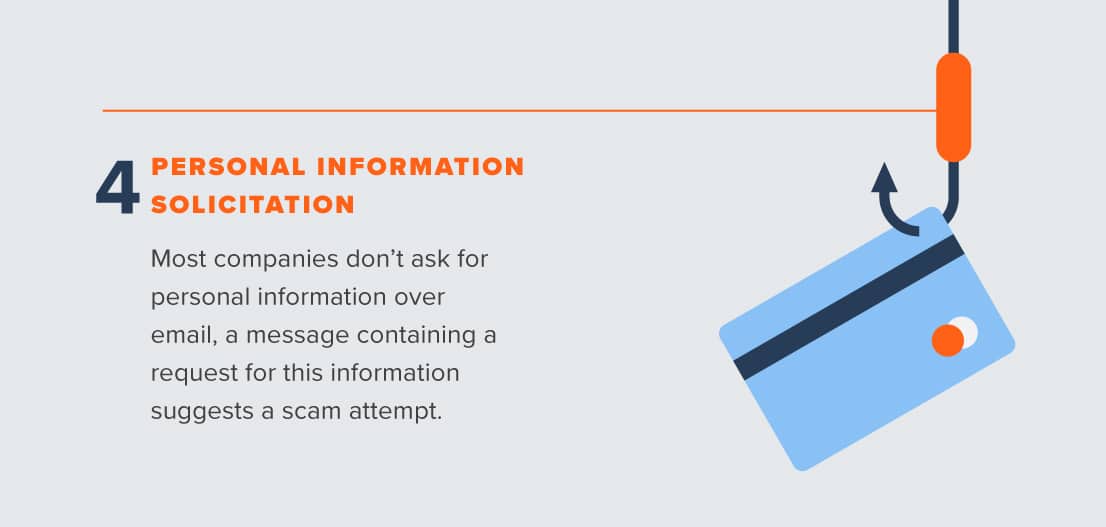
5. Unfamiliar email addresses: If one or more of the other indicators on this list are present but you’re still unsure, take a look at the email address of the sender. If it looks real (that is, if it’s a legitimate company email address), then you might be safe. If you know the email address doesn’t match that of the sender, it’s probably a phishing attempt.
Steps you can take to keep your data protected from phishing attacks
There are a number of steps organizations can (and should) take to protect their sensitive data from phishing attacks. Because phishing attacks often take place via email, proper anti-phishing training for employees is one of the most effective ways to prevent a security breach. Employees should take caution before clicking any links or downloading attachments they receive over email, making sure they are certain they know who the sender is before taking action.
However, according to research from Cloudian, 65% of companies that reported phishing attacks had conducted anti-phishing training for employees, meaning organizations need to implement a more comprehensive set of cybersecurity controls that go beyond employee training.
It’s critical that companies conduct routine monitoring of their entire security infrastructure to identify possible security vulnerabilities and patch them as soon as they are detected. It’s also important to reevaluate their governance policies on a regular basis and update them to reflect emerging threats. Investing in the latest anti-malware software can help organizations strengthen their cybersecurity posture by detecting security breaches and automating incident response.
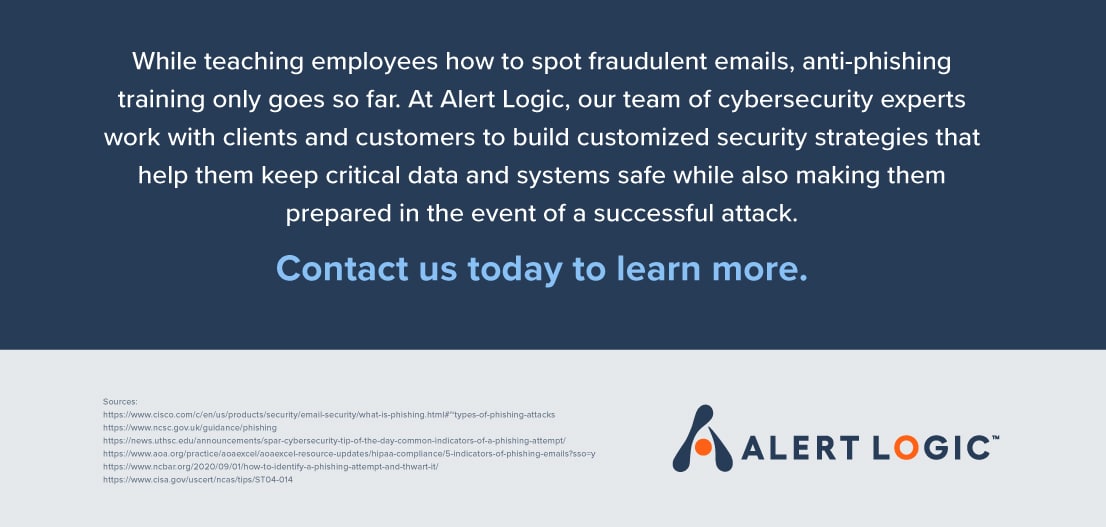
Protect your data from all types of cybersecurity attacks
It’s becoming more important than ever to identify cybersecurity attempts and keep hackers at bay. Alert Logic’s team of high-touch security experts supplies organizations with the tools, knowledge and expertise they need for 24/7 protection of their sensitive information, while also customizing response plans in case the worst does happen.